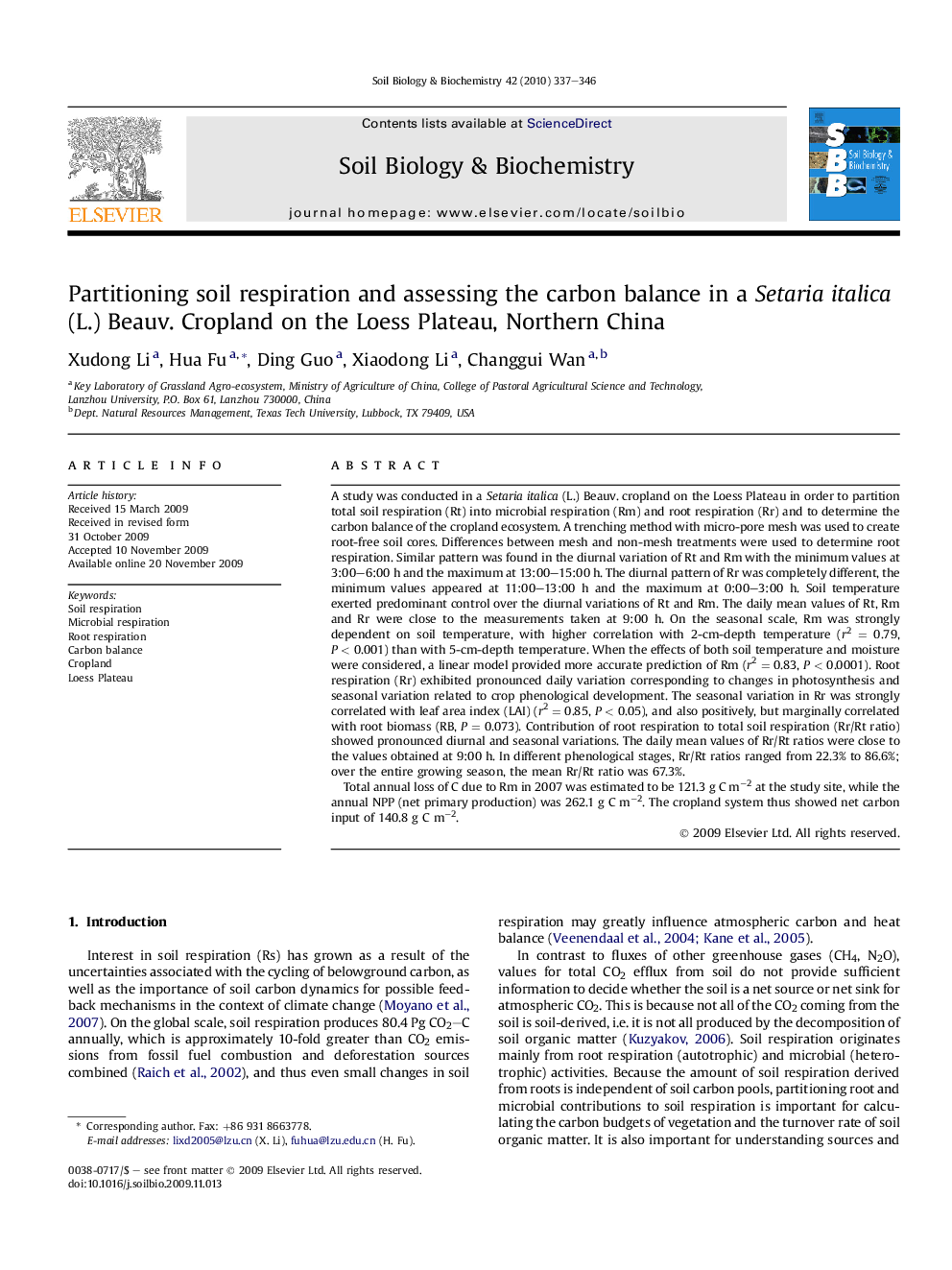| Article ID | Journal | Published Year | Pages | File Type |
|---|---|---|---|---|
| 2025144 | Soil Biology and Biochemistry | 2010 | 10 Pages |
A study was conducted in a Setaria italica (L.) Beauv. cropland on the Loess Plateau in order to partition total soil respiration (Rt) into microbial respiration (Rm) and root respiration (Rr) and to determine the carbon balance of the cropland ecosystem. A trenching method with micro-pore mesh was used to create root-free soil cores. Differences between mesh and non-mesh treatments were used to determine root respiration. Similar pattern was found in the diurnal variation of Rt and Rm with the minimum values at 3:00–6:00 h and the maximum at 13:00–15:00 h. The diurnal pattern of Rr was completely different, the minimum values appeared at 11:00–13:00 h and the maximum at 0:00–3:00 h. Soil temperature exerted predominant control over the diurnal variations of Rt and Rm. The daily mean values of Rt, Rm and Rr were close to the measurements taken at 9:00 h. On the seasonal scale, Rm was strongly dependent on soil temperature, with higher correlation with 2-cm-depth temperature (r2 = 0.79, P < 0.001) than with 5-cm-depth temperature. When the effects of both soil temperature and moisture were considered, a linear model provided more accurate prediction of Rm (r2 = 0.83, P < 0.0001). Root respiration (Rr) exhibited pronounced daily variation corresponding to changes in photosynthesis and seasonal variation related to crop phenological development. The seasonal variation in Rr was strongly correlated with leaf area index (LAI) (r2 = 0.85, P < 0.05), and also positively, but marginally correlated with root biomass (RB, P = 0.073). Contribution of root respiration to total soil respiration (Rr/Rt ratio) showed pronounced diurnal and seasonal variations. The daily mean values of Rr/Rt ratios were close to the values obtained at 9:00 h. In different phenological stages, Rr/Rt ratios ranged from 22.3% to 86.6%; over the entire growing season, the mean Rr/Rt ratio was 67.3%.Total annual loss of C due to Rm in 2007 was estimated to be 121.3 g C m−2 at the study site, while the annual NPP (net primary production) was 262.1 g C m−2. The cropland system thus showed net carbon input of 140.8 g C m−2.
